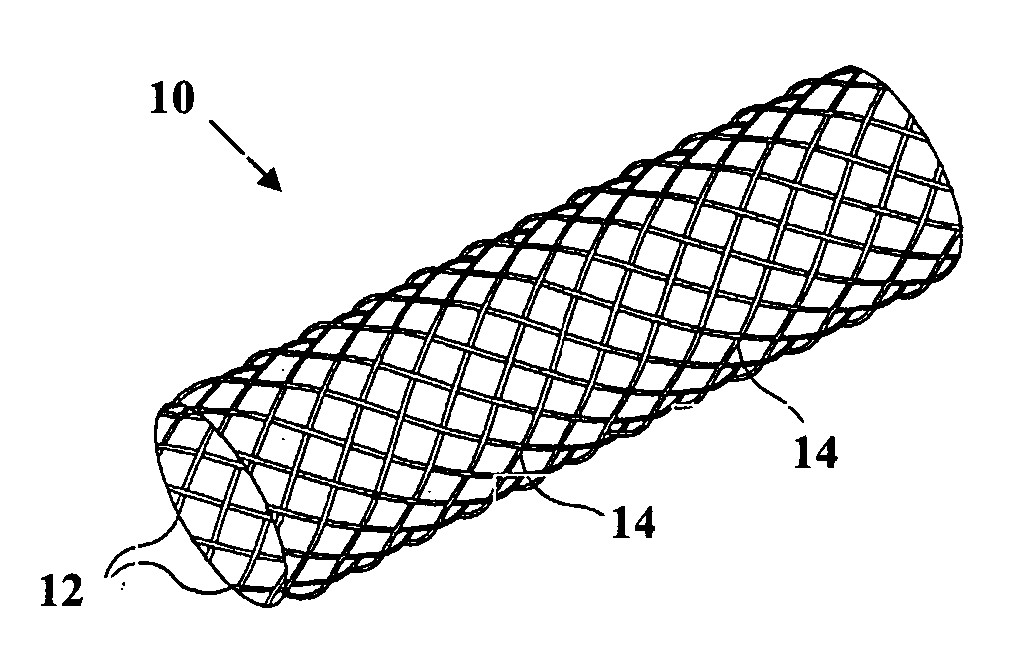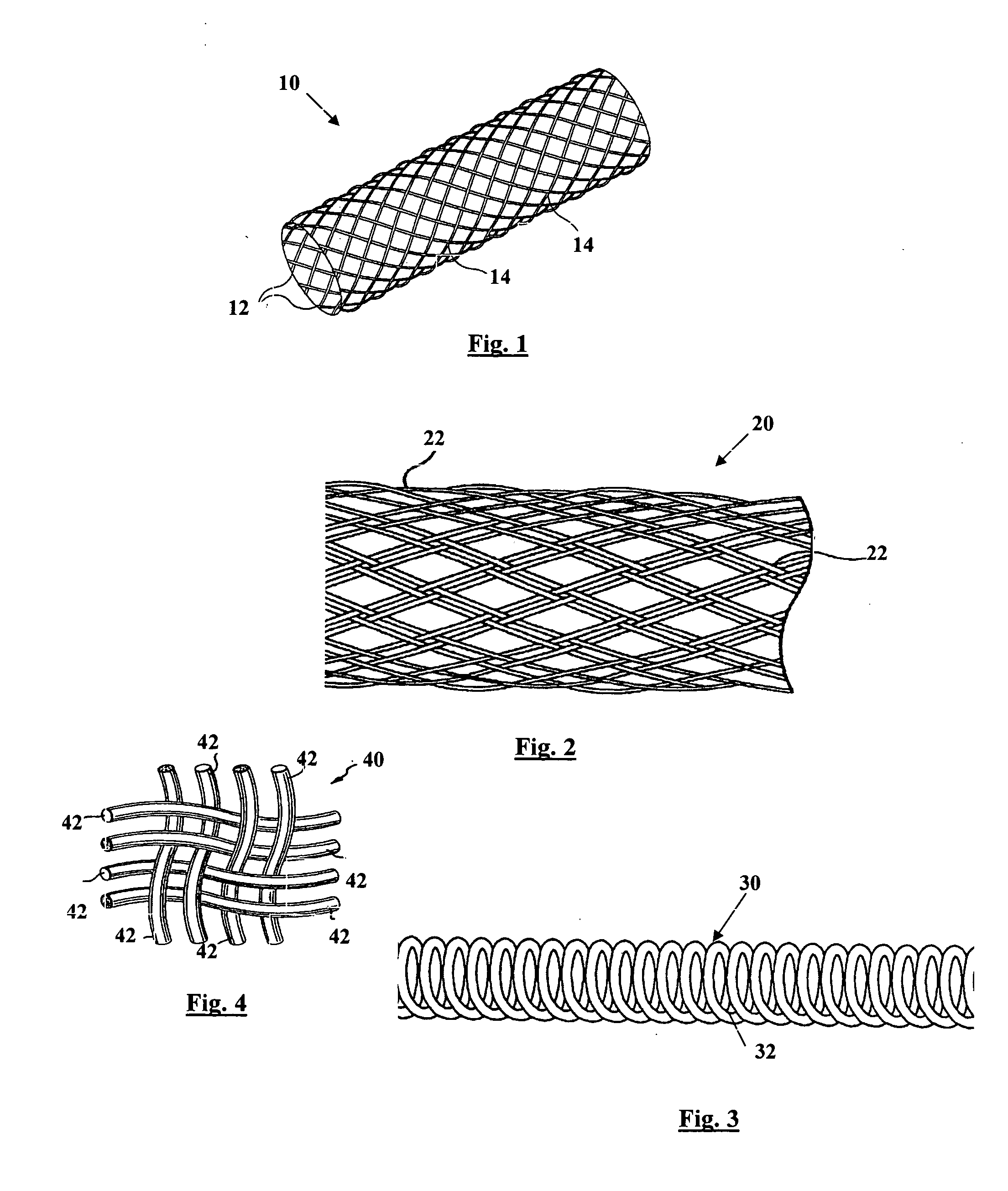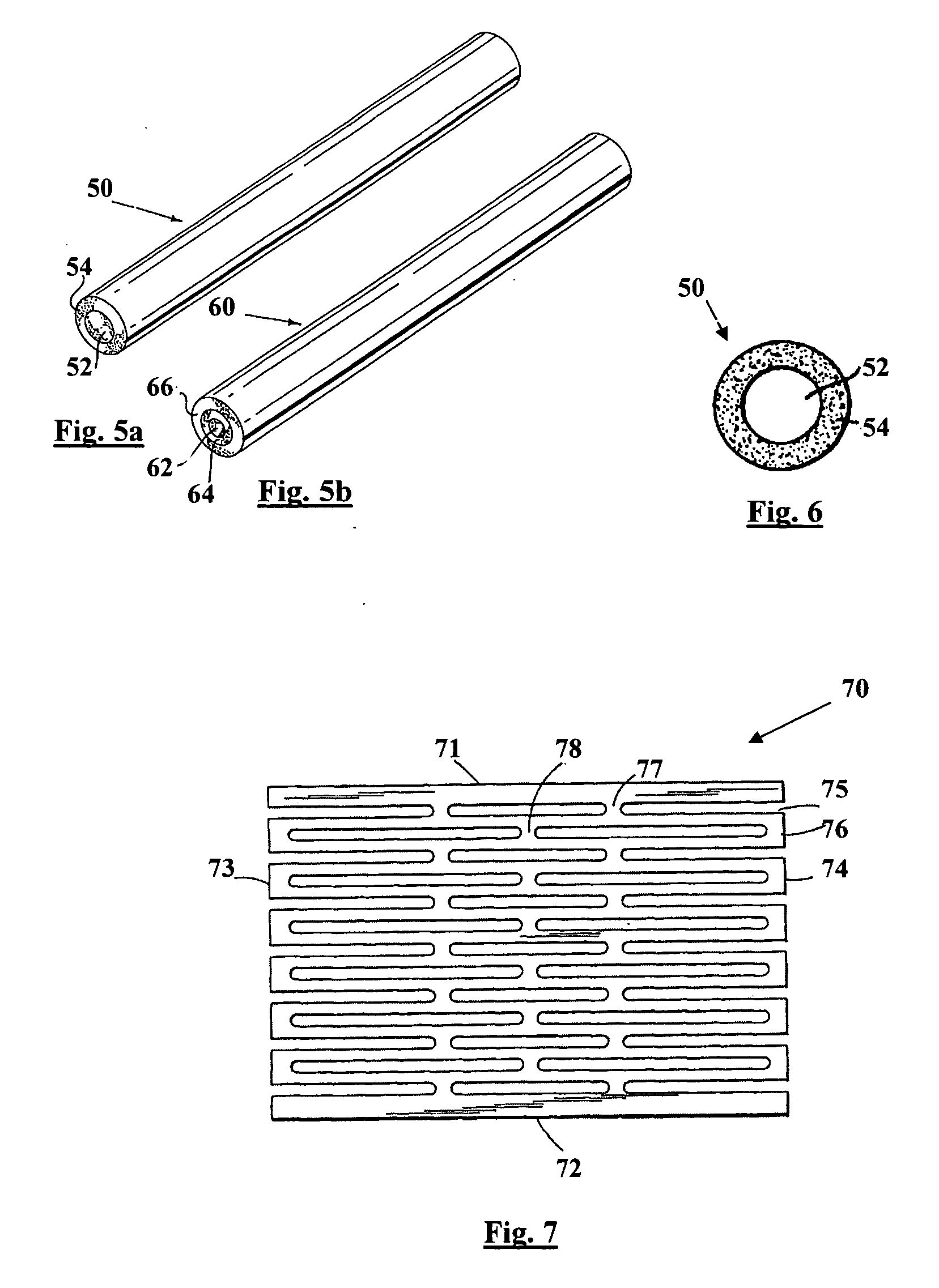Metal reinforced biodegradable intraluminal stents
- Summary
- Abstract
- Description
- Claims
- Application Information
AI Technical Summary
Benefits of technology
Problems solved by technology
Method used
Image
Examples
Embodiment Construction
[0030] The present invention is directed to an intraluminal stent comprising a metallic reinforcing component; and a biodegradable polymeric material covering at least a portion of the metallic reinforcing component. The metallic reinforcing component provides structural reinforcement for the stent but is insufficient, in the absence of the biodegradable polymeric material, to provide a stent capable of maintaining patency of a lumen upon implantation of the stent into the lumen.
[0031] The composite intraluminal stent of the present invention, in contrast with known composite stents, utilizes both the metallic component and the biodegradable polymeric component to provide the mechanical properties necessary for maintaining the patency of the lumen upon implantation of the stent into a body lumen. Whereas known composite stents typically employ a biodegradable polymeric component as a coating for incorporating and providing localized release therefrom of a therapeutic agent, such co...
PUM
| Property | Measurement | Unit |
|---|---|---|
| Therapeutic | aaaaa | aaaaa |
| Biocompatibility | aaaaa | aaaaa |
| Biodegradability | aaaaa | aaaaa |
Abstract
Description
Claims
Application Information
 Login to View More
Login to View More - R&D
- Intellectual Property
- Life Sciences
- Materials
- Tech Scout
- Unparalleled Data Quality
- Higher Quality Content
- 60% Fewer Hallucinations
Browse by: Latest US Patents, China's latest patents, Technical Efficacy Thesaurus, Application Domain, Technology Topic, Popular Technical Reports.
© 2025 PatSnap. All rights reserved.Legal|Privacy policy|Modern Slavery Act Transparency Statement|Sitemap|About US| Contact US: help@patsnap.com



